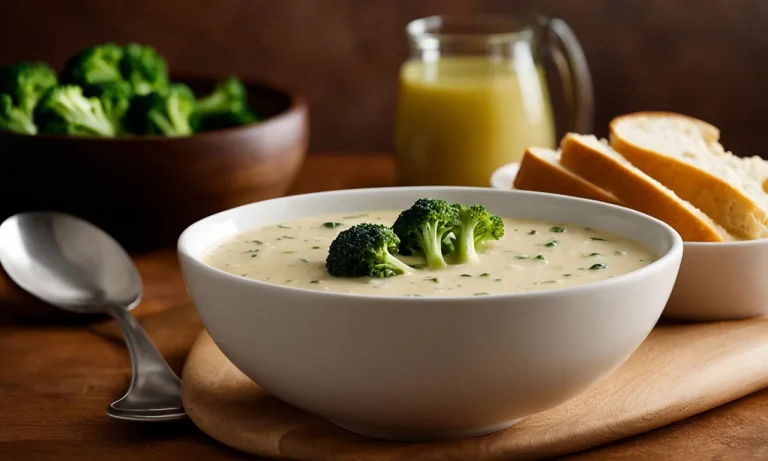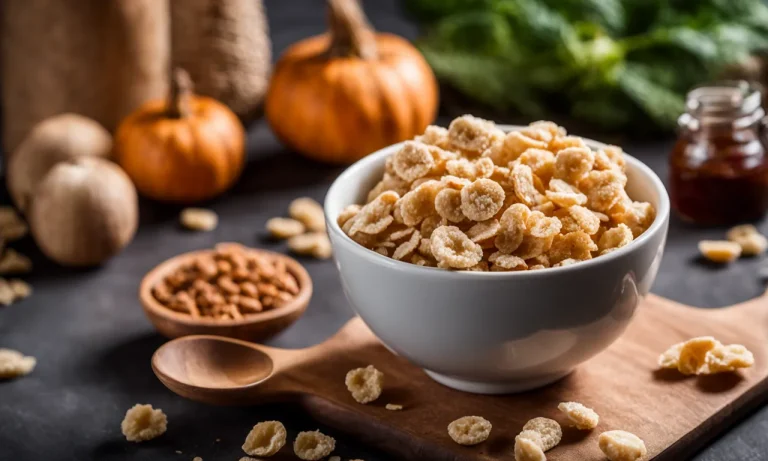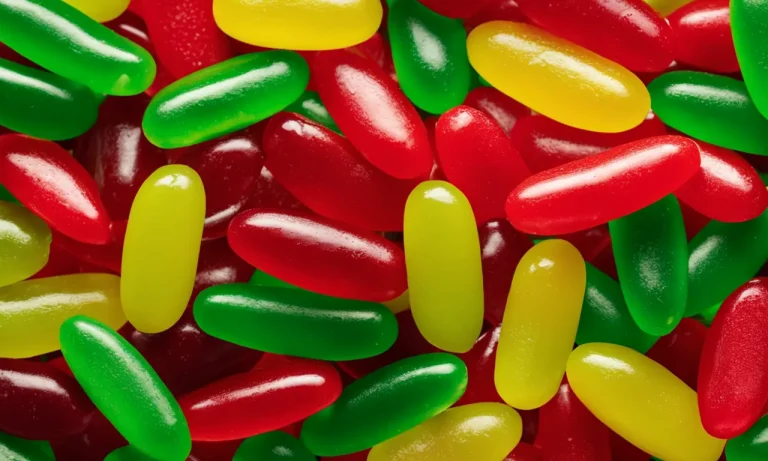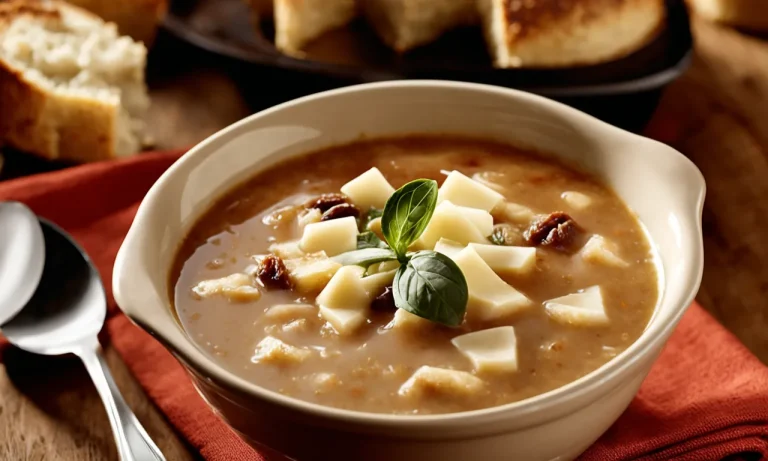Is Confectioners Glaze Vegan? Uncovering The Truth
Glazes and coatings give many sweets their shiny, appetizing finishes. But are these confectionary coats vegan? Specifically, does confectioners glaze meet vegan standards? This common coating has some hidden animal ingredients that may surprise candy lovers.
If you’re short on time, here’s a quick answer to your question: Confectioners glaze is generally not vegan. Traditional glaze contains shellac, a resin from female lac bugs. Some brands use vegan alternatives, but finding confectioners glaze without shellac can be tricky.
What is Confectioners Glaze?
Confectioners glaze, also known as shellac, is a popular ingredient used in the food industry, particularly in the production of candies and chocolates. It is a natural resin that is derived from the secretions of the female lac bug, an insect found in the forests of India and Thailand.
The resin is collected by scraping it from the bark of trees where the bugs lay their eggs.
Made from the Lac Resin of Lac Bugs
Confectioners glaze is made by dissolving the lac resin in a mixture of alcohol and water. This creates a thin, clear liquid that can be easily applied to candy and other confectionery products. The process of extracting the resin is labor-intensive, as it involves carefully harvesting the secretions without harming the bugs or the trees they inhabit.
Gives Candy a Shiny, Smooth Coating
One of the primary functions of confectioners glaze is to give candies a shiny and smooth coating. When applied to the surface of a candy, it dries quickly and forms a protective layer that enhances its appearance and extends its shelf life.
This glossy finish is particularly desirable for candies such as gummy bears, jelly beans, and chocolate-covered nuts.
Used on Candy Corn, Jelly Beans, More
Confectioners glaze is commonly used on a wide range of candies, including candy corn, jelly beans, coated chocolates, and hard candies. Its ability to provide a glossy finish makes it an ideal choice for these types of confectionery products.
However, it is worth noting that not all candies contain confectioners glaze, as manufacturers may opt for alternative coatings or ingredients for various reasons.
For more information on confectioners glaze and its use in the food industry, you can visit FDA’s official website.
Why Confectioners Glaze Isn’t Vegan
Confectioners glaze, also known as shellac, is a commonly used ingredient in the food industry. While it may seem harmless, it is important for vegans to be aware that confectioners glaze is not a vegan-friendly substance. There are several reasons why this is the case.
Shellac Resin Comes from Lac Bugs
The main component of confectioners glaze is shellac resin, which is derived from the secretions of lac bugs. These bugs are native to India and Thailand and their secretions are collected from trees where they reside.
The resin is then processed to create the shiny, protective coating known as confectioners glaze.
While the idea of bugs being used in food production may be unsettling to some, it is important to note that the bugs themselves are not harmed in the process. The resin is collected from the trees without harming the bugs, as they continue to produce more secretions.
Bugs are Processed to Source the Resin
Although the bugs are not harmed during the collection of their secretions, they do undergo a processing stage in order to extract the resin. This involves boiling the secretions and separating the resin from impurities.
This processing step can be seen as a point of contention for vegans, as it involves the use of animal-derived substances.
Considered an Animal Byproduct
Confectioners glaze, being derived from lac bugs, is considered an animal byproduct. For vegans who avoid the consumption of any animal-derived substances, including insects, confectioners glaze is not a suitable ingredient.
It is worth noting that there are alternative options available for vegans who still wish to achieve a glossy finish on their confections. Some vegan-friendly alternatives include vegetable-based waxes and plant-based coatings.
It is always important to read ingredient labels and do thorough research to ensure that the products we consume align with our ethical values and dietary choices. Websites like The Vegan Society provide valuable resources and information for those seeking vegan-friendly alternatives.
Alternative Vegan Glazes
For those following a vegan lifestyle, finding suitable alternatives to animal-based products can sometimes be a challenge. When it comes to glazes, one common question that arises is whether confectioners glaze is vegan-friendly.
Let’s uncover the truth and explore some alternative vegan glazes that can be used in various confectionery applications.
Carnauba Wax from Palm Trees
Carnauba wax is a popular vegan alternative to confectioners glaze. It is derived from the leaves of the Carnauba palm tree, which is native to Brazil. The wax is harvested by drying the leaves and then mechanically separating the wax from the leaf surface.
Carnauba wax is known for its glossy finish and is commonly used in candies, chocolates, and even pharmaceuticals. Due to its plant-based origin, it is considered vegan-friendly.
Plant-Based Gums and Resins
Another option for a vegan glaze is the use of plant-based gums and resins. These natural substances, such as gum arabic or acacia gum, are extracted from various trees and plants. They are commonly used in food and confectionery industry as thickening agents and emulsifiers.
When used as a glaze, they provide a glossy and protective coating to the confectionery products. Plant-based gums and resins are a great vegan alternative to animal-based glazes.
Rice Bran, Soybean Oil, and More
There are also vegan glazes available that are made from a blend of vegetable oils. These oils, such as rice bran oil or soybean oil, can be combined with other plant-based ingredients to create a glaze that mimics the properties of confectioners glaze.
These alternatives provide a glossy finish and can be used in a variety of confectionery applications. They offer a cruelty-free option for those who choose to follow a vegan lifestyle.
It is important to note that the availability of vegan glazes may vary depending on your location and the brands you have access to. Therefore, always check the ingredients list or reach out to the manufacturer to ensure that the glaze you are using is indeed vegan-friendly.
For more information on vegan glazes and other plant-based alternatives, you can visit websites such as VegNews.com or VeganBaking.net.
How to Find Vegan Confectioners Glaze
Check Ingredient Lists for Shellac
When searching for vegan confectioners glaze, the first step is to examine the ingredient lists of the products. Look out for the presence of shellac, as it is a common ingredient in traditional confectioners glaze.
Shellac is a resin secreted by the female lac bug, and it is widely used in the food industry as a glazing agent.
Shellac is derived from insects, making it unsuitable for vegans. Therefore, if you come across the term “shellac” in the ingredient list, it is a clear indication that the product is not vegan-friendly. In such cases, it is best to avoid purchasing that particular confectioners glaze.
Look for ‘Vegan’ Labeling
Another way to identify vegan confectioners glaze is by looking for products that are explicitly labeled as “vegan.” Many manufacturers are now catering to the growing demand for vegan alternatives and are labeling their products accordingly.
When a product is labeled as “vegan,” it means that it does not contain any animal-derived ingredients or by-products. This includes confectioners glaze, which would be made from plant-based or synthetic alternatives, ensuring that no animals were harmed in the process.
Call or Email Companies to Inquire
If you are unable to find clear information on the ingredient list or labeling, reaching out to the companies directly can help you determine whether their confectioners glaze is vegan. Many companies have customer service representatives who can provide you with accurate information about their products.
Calling or emailing companies shows your dedication to making ethical choices and encourages them to consider vegan alternatives in their product offerings. In some cases, companies may not have explicitly labeled their products as vegan, but they may still be using vegan-friendly ingredients in their confectioners glaze.
By reaching out, you can gain clarity and make an informed decision.
Remember, being a conscious consumer is all about making choices aligned with your values. By following these steps, you can find vegan confectioners glaze that allows you to indulge in your favorite sweet treats without compromising your ethics.
Homemade Vegan Glaze Options
If you follow a vegan lifestyle, you may be wondering if confectioners glaze is vegan-friendly. The truth is, traditional confectioners glaze is made from shellac, which is derived from the lac beetle. This means it is not suitable for vegans.
However, there are plenty of homemade vegan glaze options that you can easily make at home to add a delicious shine to your baked goods. Let’s explore some of these alternatives:
Agar Agar, Maple Syrup, and Nut Butter
One option for a vegan glaze is to combine agar agar, maple syrup, and nut butter. Agar agar is a plant-based gelatin substitute made from seaweed. It provides a thick and glossy texture to the glaze. To make this glaze, simply dissolve agar agar in water, then add maple syrup and your choice of nut butter.
Stir until well combined and smooth. This glaze is perfect for drizzling over cookies, cakes, or donuts.
Powdered Sugar Glaze with Plant Milks
Another vegan glaze option is a powdered sugar glaze made with plant milks. To make this glaze, start by sifting powdered sugar into a bowl. Gradually add plant milk, such as almond milk or coconut milk, until you reach your desired consistency.
You can also add a splash of vanilla extract for extra flavor. This glaze is versatile and can be used on a variety of baked goods, from cinnamon rolls to muffins.
Fruit Juice Concentrates for Shine
If you’re looking for a natural and vibrant glaze, fruit juice concentrates are the way to go. Simply mix your favorite fruit juice concentrate with powdered sugar until you have a smooth and shiny glaze. This glaze works particularly well on fruit tarts or as a topping for cupcakes.
It adds a burst of fruity flavor and a beautiful glossy finish.
Remember, when making homemade vegan glazes, feel free to experiment with different flavors and ratios to suit your taste preferences. The possibilities are endless, and you can create unique glazes that will impress your friends and family.
Conclusion
Traditional confectioners glaze relies on shellac from lac bugs, making it off-limits for vegans. But with more candy companies offering vegan alternatives, it’s getting easier to find ethical, animal-free glazes.
A quick ingredients check or contact with the manufacturer can help identify if that shiny coating is from plants or bugs.







